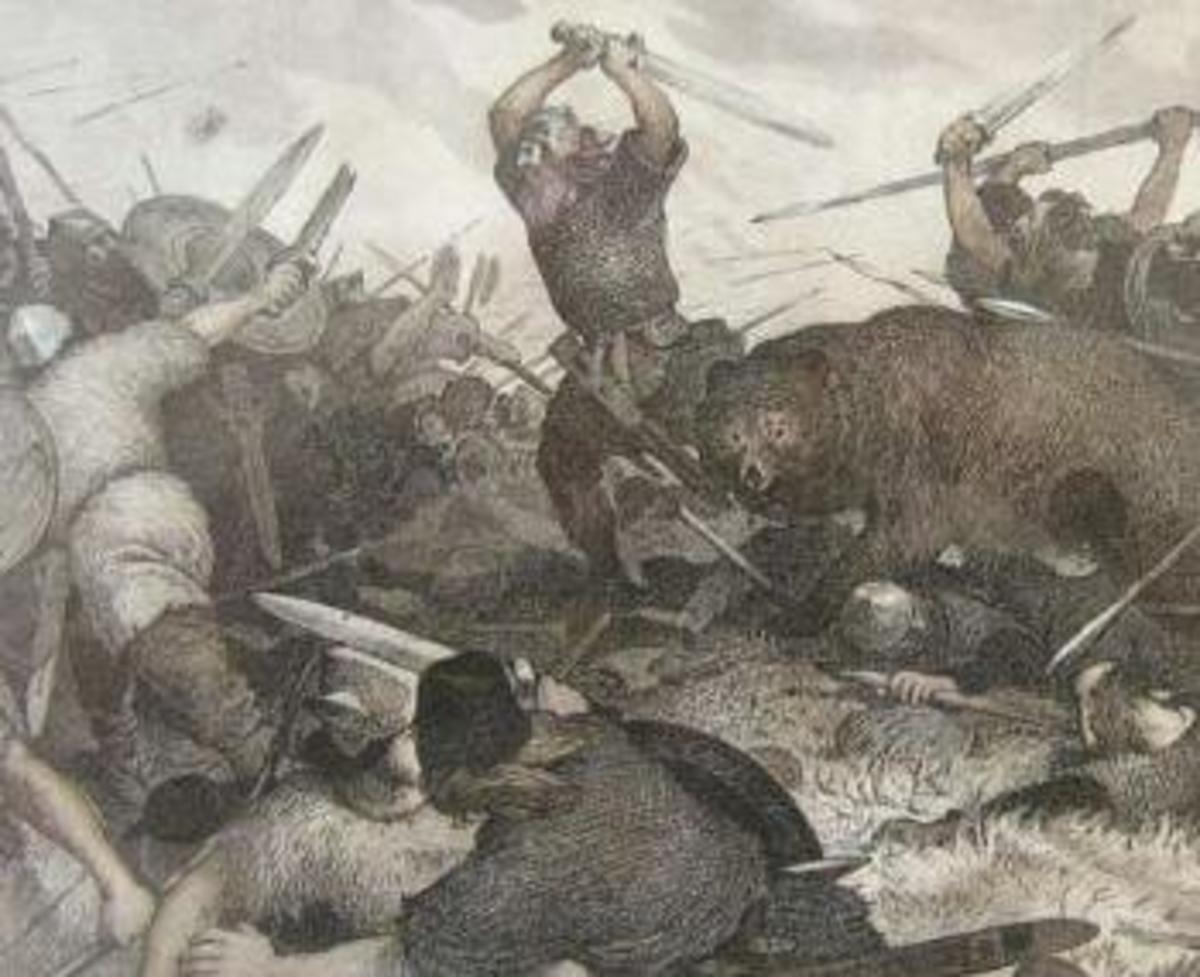Bring Out Your Inner Warrior: Create the Unstoppable Mental Game Plan
It takes mental training to bring out your inner warrior

Creating your Mental Game Plan for the Fighting Sports and Martial Arts
When I worked as a correction officer in New England, I lived through my share of action, including one major riot where the prison was on lock down for a month.
My fellow officer and friend, Peter, and I were in the rotundra when the alarms sounded, which meant a prison escape or something else was awry and the prison went into lock down mode. When this happened, there were certain doors that automatically locked to prevent anyone from entering and exiting the building. The officer in the control room had accidentally hit the button that opened up all the individual cells in the unit caused the lock down. Because he hit the wrong button, Pete and I were locked in the rotundra with 120 inmates for twelve hours.
Pete and I did not have much time to prepare when the first wave of inmates came at us. The first 8 were probably the hardest because we kept getting hit from all sides.
Then, it was like a switch went on, and we went from survival mode to fighting mode, and we fought for twelve straight hours, with at least a dozen guys around us trying to beat us to death. Every hit we landed from then on broke something - arms, noses, jaws, legs, kneecaps, heart punches, what ever it took to survive, until we were rescued or they gave up. In the end, there were dozens of inmates lying on the floor bloody and broken. The riot squad finally made their way into the unit to disperse the last few inmates still trying to fight. We were bruised, bloody, and badly beaten, but alive.
I use this experience to help my clients in the ring, whether it’s martial arts or boxing. It’s part of the mental game specific to the fighting sports – how to keep going even when your world is rocked. It’s unrealistic to think that no one can land a punch on you sometime in the future. Believe me, I don’t like to get hit, and even though I have a lot of street fighting experience from growing up in the Bronx and I have a black belt in Shaolin Kempo and Tai Chi, I don’t ever discount the possibility that someone might be able to clock me one.
It is prudent for any fighter to have a back up plan on what to do if this event occurs, no matter how unlikely it might seem. Mentally preparing for any and every possibility and scenario is one of the building blocks for an unstoppable mental game. I have created a list for martial artists to work through, which I share below, so even when things don’t go down as planned, your mental game won’t disappear.
Steps to Bring Out Your Inner Warrior
There are certain factors that will affect a mental game every time. They lie hidden beneath the surface and always come up at the wrong times. Addressing these factors before you step into the ring will help strengthen your mental game and help you access your inner warrior at the times you need it most.
Time to put on your warrior face.

Before the Fight
I have my clients go through each one of these to make certain the causes of these issues are dealt with before they step into the ring. Write down an answer to each component of this list. It is a good starting point to work out any issues that can affect your mental game and your performance in the ring.
- Stress and Anxiety
Are you really ready for this fight? What is your mind saying to you? Life in general, family, issues at training camp, your weaknesses in the ring, all these can create stress and anxiety.
- Fears and Apprehension
Your life experiences, your last 5 fights, issues from childhood that are unresolved. No matter how much you claim to have dealt with them, hid them, or ignore them, they are still there and will affect your mental game every fight.
- Doubts
Your opponent’s strengths, that one move you keep getting caught in, your past performance, and issues from childhood creeping up on you and your mental game.
- Performing in front of an audience
We learn as children in the schoolyard, if there’s a fight, unless it’s done Kill Bill style, on an isolated beach under the light of the moon, there will most likely be an audience to watch it. It is possible for any athlete to experience some sort of angst over performing in front of fans, especially if you are not the favorite and you’re getting booed. Anticipate and embrace the fact you are not going to be the favorite all the time, and work out any issues you might have with other people’s reaction towards you so they do not affect your mental game.
Clear mental blocks to uncover your inner warrior.

During the Fight
Because of my past experiences, I came to realize there are two modes fighters can go into - survival mode and warrior mode.
You want to avoid going into survival mode. For a majority of fighters, the fight will be over because your mental game is already shut off. Instead of strategizing your next moves and keeping your mind in the game, your mental faculties have shut down, you clam up, and you’re just doing your best not to get hit. That is the moment when your opponent can move in to knock you out.
In warrior mode, it does not matter how much you are getting hit, trapped, or beaten. If you are in warrior mode, you can win at any moment from any one of the hundreds of moves you have practiced and worked on in your dojo. You’re always planning the next move, the next attack, and how you can take your opponent down. In the ring it is all about strategy. A fighting mental game lets you see and anticipate your opponent’s moves and keeps you sharp. That’s how fights are won.
Working on your issues before you step into the ring, practicing meditation, and practicing your warrior mode helps you to manage your triggers that cause you retreat into survival mode.
After the Fight
Win, lose, or draw there is always a lesson to be learned from every fight. Watch the playbacks, go through them, and mark how you where feeling at each point something went wrong. What was going through your mind? What happened when you were trapped or hit? How did you come back or not?
Self-reflection can help a fighter or martial artist soar.

Work on Your Mental Game to Bring Out Your Inner Warrior
These are items not taught in the gym, but they are just as important as your daily work out schedule. It does not matter how great your gym is. If you are not prepared mentally for all challenges in the ring you might face, you run the risk of doing what comes to all of us naturally, switching to autopilot because of that fight or flight survival mode. If you have not worked though the list above and cannot automatically switch mental states, you’re not fighting, only defending. Keep it together in the ring and do the mental work you need to strengthen and solidify your mental game.
Summary
- Learning to bring out your inner warrior for a strong mental game is a two step process.
- The first step to bringing out your inner warrior is to examine how your emotions are doing before your fight.
- The second step to bringing out your inner warrior is making sure you do not switch to survival mode during the fight.
- Examine the recording from the fight and see what you were thinking and feeling at the time.
- Keep practicing your mental game!









